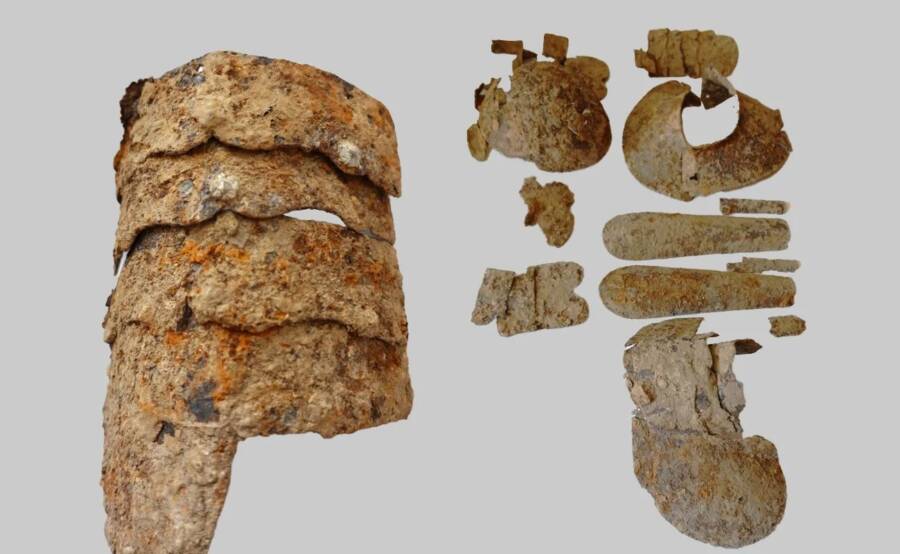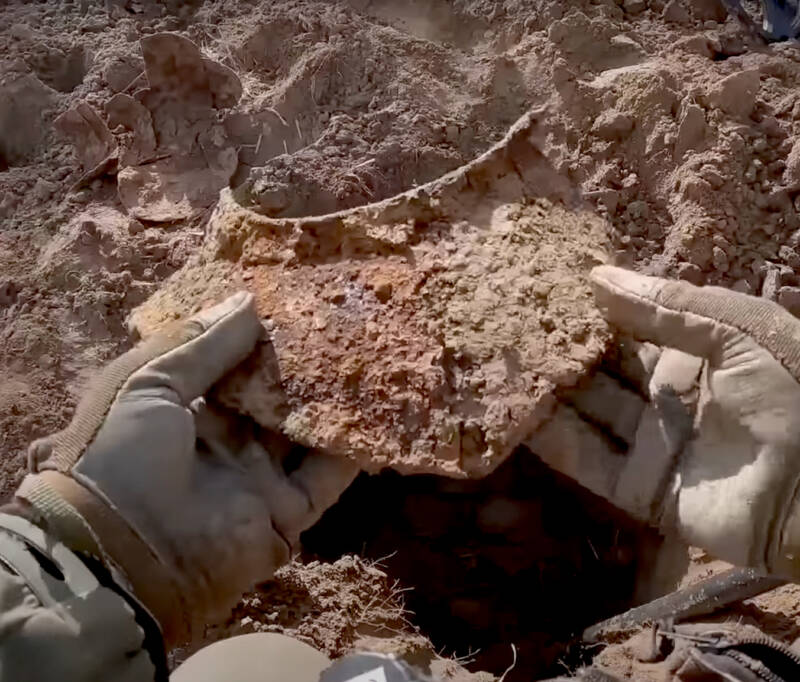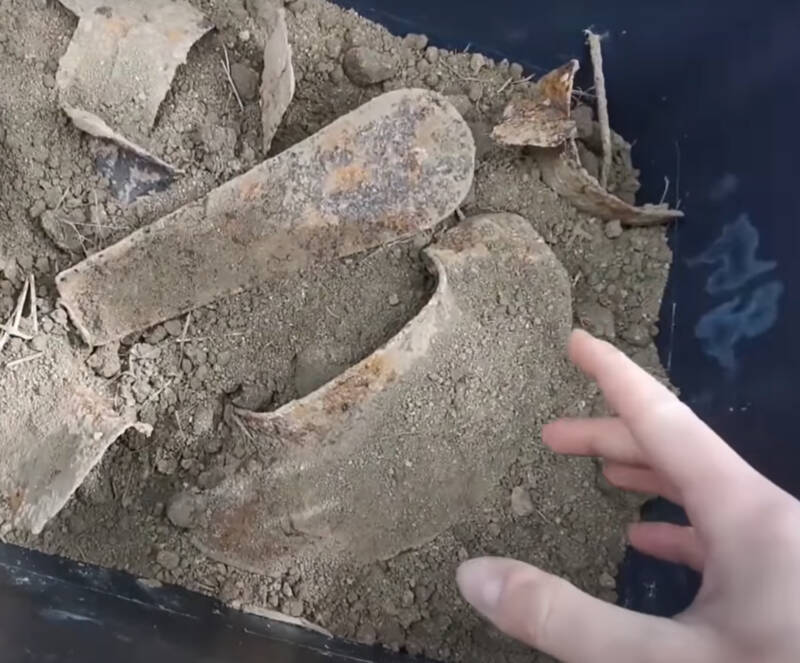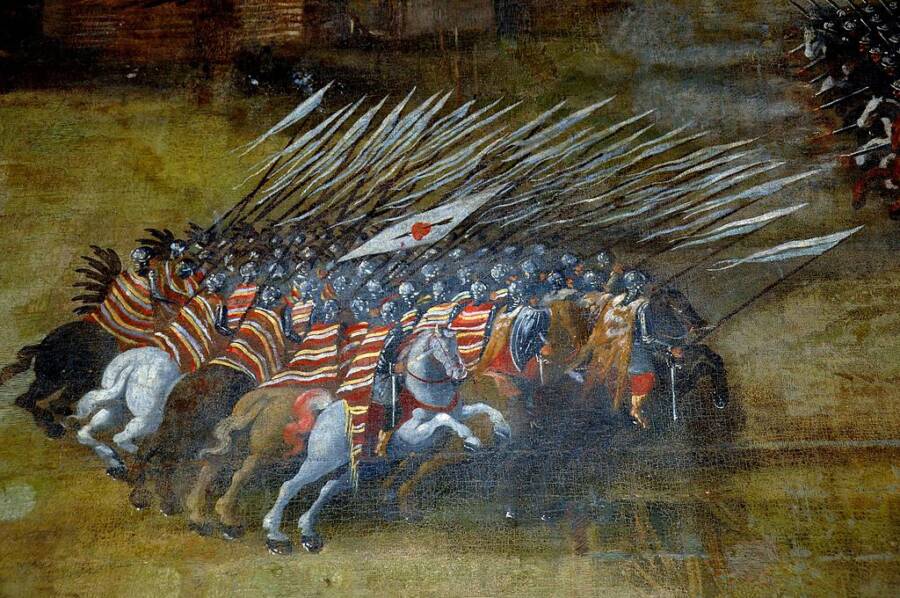Found in a field in the village of Mikułowice, the armor remains in surprisingly good condition despite being at least three centuries old.

Marek FlorekThe armor is mostly intact, though it’s missing elements of the cuirass like the breastplate and a backplate.
Patryk Chmielewski is used to making incredible finds. A Polish metal detectorist and YouTuber known as “Profesor Detektorysta” (Professor Detectorist) he’s come across coins, crucifixes, and weapons. And last month, Chmielewski made one of his most exciting discovery yet: a partially intact set of hussar armor from the 17th century.
The armor, discovered in the village of Mikułowice, remains in surprisingly good condition, and it evokes a fascinating era of European history in Poland and beyond.
The Discovery Of The Hussar Armor In Poland

Profesor Detektorysta/YouTubeThe armor sat just two feet beneath the surface for more than three centuries.
Chmielewski discovered the armor while sweeping his metal detector over a plowed field in Mikułowice, Poland. When his metal detector started to ping, Chmielewski set up his camera in case he found something to share with his 13,000 followers.
Two feet down, Chmielewski did find something — several pieces of metal, which he brought to the Provincial Office for the Protection of Monuments. In a press release, they confirmed that the metal pieces Chmielewski had stumbled across were a partially intact set of hussar armor.
“The armor is incomplete, the basic element of the cuirass is missing, consisting of a breastplate and a backplate, which served to protect the chest and back, and one of the shoulder pads,” Dr. Hab. Marek Florek from the Sandomierz branch of the Provincial Office for the Protection of Monuments, explained. “The left shoulder pad, both bracers protecting the forearm, and a semicircular helmet, i.e. a helmet with two so-called cheeks and the so-called clavicle protecting the neck and nape.”

Profesor Detektorysta/YouTubeThough the breastplate and backplate were nowhere to be found, metal detectorist Patryk Chmielewski unearthed a helmet, the left shoulder pad, the clavicle protector, and two forearm bracers.
The armor lacks decorative elements, which suggests that it was made locally, probably on the orders of a local nobleman.
“These types of artifacts are found very rarely,” Florek remarked to All That’s Interesting in an email. “It could have been a family souvenir kept in the noble manor in Mikułowice. It was hidden (buried) in the ground, but it is not known when and for what reasons.”
But researchers believe that they know when the armor was made: back in the 17th century. This places it squarely within the era of Polish hussars.
Who Were The Winged Hussars Of Poland?

Wikimedia CommonsPoland’s hussars were known for their rear wings meant to demoralize the enemy.
The word “hussar” originated in 15th-century Hungary. Then, light cavalry units of the country’s “Black Army” served the king, Matthias Corvinus, between 1458 to 1490. In the 16th and 17th century, Hungarian hussars were also enlisted to fight for Habsburg emperors. Under their command, they battled Ottoman armies and others across Europe.
Poland’s hussars emerged around the same time, at the beginning of the 16th century. They served in a number of Polish conflicts including the Orsza (1514), the Obertyn (1531), and the Battle of Vienna (1683).
“Hussars, as a type of cavalry, functioned in the Polish army from the 16th century until almost the end of the 18th century,” a researcher from Maria Curie-Skłodowska University (UMCS) explained in the press release.

Wikimedia CommonsPoland’s winged hussars take part in the Battle of Klushino in 1610.
The hussar armor found by Chmielewski will be restored by researchers, who may be able to determine its provenance more accurately. After conservation, it will go on display at the Castle Museum in Sandomierz.
Long forgotten in a field, it’s thanks to Chmielewski and his metal detector that this fascinating piece of Polish history has come to life. And researchers are hopeful that the field in Mikułowice may offer up more treasures.
“It is likely that there are similar artifacts nearby hidden in the ground at the same time,” Florek told All That’s Interesting. “We will continue to search.”
After reading about the 17th century Hussar armor found by a metal detectorist in Poland, look through these photos of some of history’s most incredible armor. Or, learn about Poland’s fascinating underground Wieliczka Salt Mine, as well as other remarkable underground cities around the world.





